Using exfoliating acids is essential to keep your skin young, healthy and beautiful. There are many different exfoliating acids (glycolic, salicylic, ascorbic…), and each has its own special properties. If you want to know what’s the right exfoliating acid for your skincare needs, this guide will help you choose the best cosmetics for you!
Hello! How is it going? Today I’m back an informative post about some of the questions that I receive more often. In this case I’m going to talk about acids, those products about which I sometimes speak so normally and that can be unknown for many, even though they are a more gentle option than physical exfoliants (Foreo, scrubs, etc.). Normally I speak of some particular acid (as in this post, in which I told you about ascorbic acid), but today I want to give you a more global introduction to know what you can find and know which is best for your skin type, when it is best to use them and with how often you should use them. Do you want to learn a little more about this topic? Here we go!
In this post I’m going to talk about these topics:
2. Types of acids. What acids are better for your skin type?
- Hyaluronic acid.
- Ascorbic acid (vitamin C).
- Alpha-lipoic acid.
- Salicylic acid (BHA or Beta Hydroxy acids).
- Alpha Hydroxy acids (AHA).
4. How often can you use acids?
1. WHAT ARE ACIDS?
For many, when I speak of acids, you will have in mind those images of Hollywood films in which a droplet of sulfuric acid melted a whole wall. Fortunately, we will not talk about those acids, but others that bring great benefits to your skin, giving you an incredible look effortlessly.
Simplifying a lot, an acid is that product with a pH (hydrogen ions concentration) lower than 7 (which is the pH of the water). Usually it is said that our skin is slightly acidic, because it has a pH that oscillates between 4.5 and 5.9. You see that this definition of acid is very broad, since coffee or milk could be considered acidic products, because they usually have a pH lower than the water. Of course, we will go a little further, and we will focus on those acids that are usually used in cosmetics and we can find in the products we use on our daily routines: glycolic acid, salicylic acid, hyaluronic acid, etc.
Of course, all this could not be that simple, and there is another value of acids that normally tends to be left aside, despite being as important as its pH when considering its efficacy, and it’s the pKa. The pKa (dissociation constant) of an acid is a value that never changes for that particular acid (for example, the pKa of glycolic acid is 3.83). Why are is this relevant to you? Because each brand formulates its products making with a higher or lower pH, thus getting more or less effectiveness. This is not to say that we should look for products with a low pH, since those should only be used by professionals, but we can compare the different products of the market to find those that best suit us.
After taking you back to your chemistry classes, we now return to the topic we are interested in: acids and their use in cosmetics. Each time we find more products formulated with acids to help you balance your skin tone, exfoliate, reduce acne, etc. However, it can be difficult to understand what each one is for, so in this post I will help you to know them better so you know how they can help you and which one suits you best.
2. TYPES OF ACIDS. WHAT ACIDS ARE BETTER FOR YOUR SKIN TYPE?
Now that you know what acids are, it’s time to get to know a little bit better what you can normally find in your products. In addition, you will be able to see which ones work best with each type of skin and what results each one contributes..
Hyaluronic acid.
Hyaluronic acid (with a pKa of 2.87) is a little special. In this other post I told you in greater detail about it. It is different from the rest of acids that I’m going to talk about, but as it is one of the most common ones in cosmetics products, I think it is interesting to analyze it in the first place. Hyaluronic acid is naturally found in our skin, and is able to withstand up to 1000 times its weight in water, making it a magnificent component to attract water and hydrate your skin in depth. This is why many products include it, because as we use it we can get a firmer and hydrated skin, reducing wrinkles and fine lines. If you want a good serum with Hyaluronic acid, besides checking my comparison of hyaluronic acid serums, I’d recommend The Ordinary Hyaluronic acid 2% + B5, which I already told you about before, and that you can get on DECIEM,< on Amazon, on SkinStore and on FeelUnique, a great solution to moisturize your skin on the surface and in depth and that works great with any type of skin. You might also want to take a look at the serum The Ordinary Marine Hyaluronics, which you can get on DECIEM (recommended), on Amazon, on SkinStore and on FeelUnique. .
Ascorbic acid (vitamin C).
Ascorbic acid (with a pKa of 4.7), as I have already told you in this post is, currently, one of the most popular acids in cosmetics. Many brands have chosen to develop product lines with vitamin C for its enormous antioxidant properties and its ability to rebalance the tone of the skin. This acid works best on oily, combination and dry skin. Products containing a high amount of ascorbic acid are not recommended for those with sensitive skin, as they may cause irritation. If you want to start using ascorbic acid I recommend you do it with or The Ordinary Magnesium Ascorbyl Phosphate 10%, which you can get at DECIEM (recommended), and on Amazon. If your skin already has some tolerance to vitamin C you could try including in your routines The Ordinary Vitamin C Suspension 23% + HA Spheres 2%, which you can get on DECIEM (recommended), on Amazon, on SkinStore and on FeelUnique. You can also check my comparison of vitamin C serums, in which I tell you about many more products..
Alpha-Lipoic Acid (ALA).
This acid (with a pKa of 4.52) is a very strong antioxidant that helps rebalance the skin tone and texture, also reducing fine lines and wrinkles. In addition, it is a very soft chemical exfoliator, so you will get a much younger look when using it. It’s designed for all kinds of skins. This acid is very sensitive to sunlight, and the products with higher concentrations of it can make your skin more photosensitive, so you should only use this product in your night routines (and always wear sunscreen, of course). .
Salicylic acid (BHA or Beta Hydroxy acids).
Salicylic acid (with a pKa of 2.97) is an oil-soluble BHA (unlike their cousins, the AHAs, which I’ll talk about below). It works better on oily and combination skin. When applied, it is possible to remove the dead cells that remain on the surface of the skin at the same time that it manages to clean the pores in an effective way. This acid is also known for its soothing properties, in addition to softening the texture, balancing the tone, reducing wrinkles and fine lines and moisturizing. If you are looking for a good exfoliant with salicylic acid I recommend you to check this one by Paula’s Choice, available on Amazon, on Paula’s Choice and on FeelUnique. I’d also recommend you to try the cleanser ByWishtrend acid-Duo 2% Mild Gel Cleanser, which you can get on Wishtrend, on Yesstyle, and on Amazon..
Alpha Hydroxy Acids (AHA).
The Alpha Hydroxy acids or AHAs (about which I spoke a little bit in this post) are a set of water soluble acids used as chemical exfoliators, removing dead cells from the surface of the skin to give you a glowy look. Over the years, the skin takes longer to remove that layer of dead cells, so this type of exfoliation is a great solution to help you keep a younger look, showing your new skin. In general, they work better for normal and dry skin. Within this category we can find different acids, providing each one different results, so after reading this post you can find what is the best acid you will come according to your skin type.
a) Glycolic acid.
Glycolic acid (with a pKa of 3.83) is now one of the best known ones in the market. It is recommended for all of skin types, except the sensitive ones. It is the AHA with the lowest molecular weight, so it penetrates deeper in the skin than the others. In addition to removing dead skin cells, it also helps reduce acne scars and hyperpigmentation while stimulating collagen production so you have a firmer, more elastic skin. You should keep in mind that this acid is especially photosensitizing, so you should use it exclusively in your night routines (although, of course, in your morning routine you always have to use sunscreen). If you want to start testing glycolic acid, I recommend you do it with the Pixi Glow Tonic (which I spoke about in this post) or The Ordinary Glycolic Acid 7% Toning Solution (about which I spoke a little more in this other post and that you can get on DECIEM (recommended), on Amazon, on SkinStore and on FeelUnique.
b) Lactic acid.
Lactic acid (with a pKa of 3.86) works best when it comes to reducing wrinkles and fine lines and balancing the texture of the skin. It is especially recommended for dry skin, although it can also be used without any problem with sensitive skin. As with glycolic acid, lactic acid is best used at night to avoid excessive photosensitizing of the skin. If you want to try the lactic acid I recommend you to start with The Ordinary Lactic Acid 10% + HA 2%, which you can get on DECIEM (recommended), on Amazon, on SkinStore and on FeelUnique.
c) Mandelic acid.
Mandelic acid (with a pKa of 3.41) is another member of the AHAs family. Among its main properties there are reducing fine lines and hyperpigmentation, as well as helping to rebalance the levels of skin oil, making it ideal for oily and sensitive skins. By penetrating the skin less than other acids, it is less potent, but that lower aggressiveness is what makes it a good choice for those who have sensitive skin. If you want to start using mandelic acid I would recommend using the ByWishtrend Mandelic Acid 5% Skin Prep Water Tonic, which you can get on Wishtrend and on Amazon or The Ordinary Mandelic Acid 10% + HA, which you can get on DECIEM (recommended), on Amazon, on SkinStore and on FeelUnique.
d) Malic acid.
Malic acid (with a pKa of 3.51) has as main functions to preserve the hydration of the skin, to reduce wrinkles and fine lines and to reduce the excessive oil of the skin. It is recommended to use it for all skin types, except for sensitive skin. This acid, which we can find in several fruits (especially in apples), is very common in cosmetics, but if you want to start using I would recommend you do it with the toner COSRX AHA 7 Whitehead Power Liquid, which you can get on Wishtrend, on Jolse, on Amazon and on FeelUnique or the serum Paula’s Choice Resist Advanced Smoothing Treatment 10% AHA, which you can get on Paula’s Choice and on Amazon.
e) Azelaic acid.
Azelaic acid (with a pKa of 4.55) is a superb tool for combating excess oil and acne, eliminating the damaging bacteria that settle on our skin and reducing inflammation and hyperpigmentation, making it a super solution. It’s best for those with oily skin. Its use is recommended for those with sensitive skin, since it helps relieve redness. If you want to start using azelaic acid in your routines, I would recommend you to try The Ordinary Azelaic Acid Suspension 10%, which you can get on DECIEM, on Amazon, on SkinStore and on FeelUnique.
3. WHEN CAN YOU USE ACIDS?
Now that you know a little better the family of acids (which, as you have seen, is quite broad), it is time to know when is the best time to use them, and I’d advise you to begin by reading my guide on how to start using exfoliating acids. Generally speaking, most acids turn the skin more photosensitive (and therefore radiation from the sun can damage it more easily). That’s why, in general, it’s best to apply them in your night routines, because you won’t run any kind of risk. Of course, there are exceptions, as with hyaluronic acid (which we already saw is a little special), which does not make the skin more photosensitive and can be used without problem in your morning routines (you can also combine it with most ingredients).
As a general rule, the best time of the year to treat your skin in depth with acids is the winter, because then the solar radiation is lower and you run less risk of damaging your skin. This is not to say that in summer you can not use them, but you will have to do much less often and much more careful. Of course, sunscreen is a fundamental part of your routines and, if you use acids, you should be even more thorough when using it.
4. HOW OFTEN CAN YOU USE ACIDS?
It is difficult to answer this question in generic way, since each acid has its particularities. As usual, you must patch test any new product before adding it to your skincare routine. If you want to start adding acids to your routines, the ideal would be to try once a week and see what results you get, if you notice any kind of irritation or stinging, etc. If all goes well, you will be able to increase the frequency very progressively, going twice a week for a time, then to three times a week and so on, although you don’t need a much higher frequency.
It is important to mention that you should not combine acids aimlessly, as there are some who see their effects enhanced by combining with others, but in certain cases you will get a less effective effect. If you want to start using acids you should start with one, and when it is fully incorporated into your routines, you can add another and see how they work, if you see any detrimental side effects, etc. If you don’t go little by little, you will most likely stress your skin and end up getting irritated, which will get you even worse off how you started.
When we start using ingredients as effective as acids, it’s easy to think that our ideal would be to use them on a daily basis, but that isn’t always the case. Sometimes it’s much more convenient to use them two or three times a week and avoid the potential irritation of a more frequent use, since it’s very likely that your skin doesn’t need them daily.
I know this has been a little difficult post, but I hope it serves as a guide to know acids a little better and see which can give you the result you seek. If you have any questions do not hesitate to leave me a comment and I will reply as soon as possible.
If you liked this post and want to continue learning about beauty, cosmetics and skin care I recommend you take a look at these posts:
Do you want to learn to take better care of your skin? You can see an index of all my informative posts here.
*I have received some of these products as PR | Read more about my transparency code.
● Follow me on Instagram, Facebook, TikTok and Pinterest.
● Share, comment and like my posts on social media.
● Shop through my links to help me keep up with this blog.

I’m Nacho and I’m passionate about skincare. I really enjoy learning and sharing my knowledge about skincare and I read scientific papers so you don’t have to. I want to break stereotypes because I believe skincare has no gender: skin is skin.


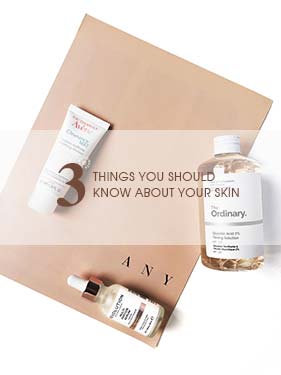
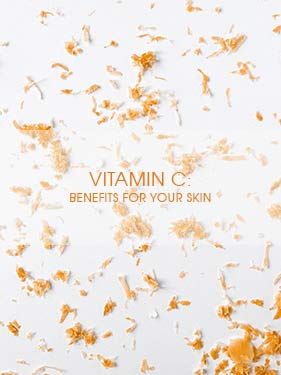
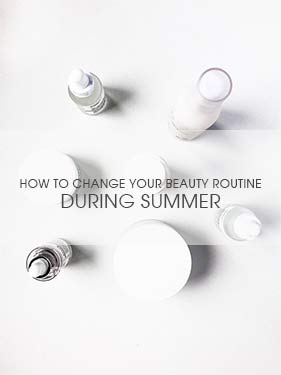
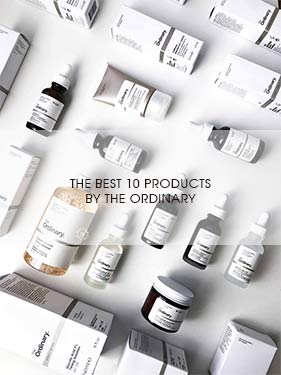
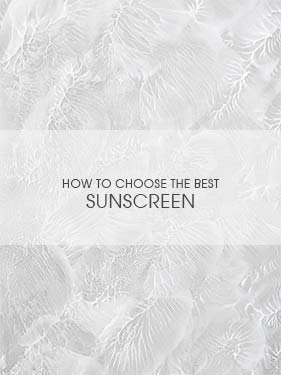
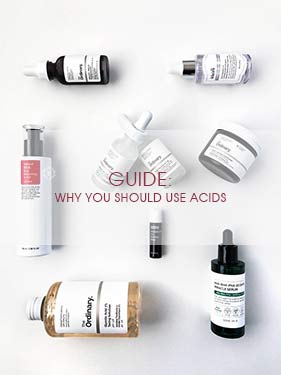


Hi, I would like to know which acids we can’t mix? Example, I’m using on a daily basis Vitamine C and hyaluronique acid in the morning. Also, I’m using Retinol serum and hyaluronique acid in the nigth. Is it good? Should I change my routine? I would like to change hyaluronique acid in the nigth for glycolic acid mix with Retinol serum. Do you think it’s a good Idea?
Thank you so much for your help
Hi Melissa, welcome to my blog! 😊
Hyaluronic acid isn’t an issue, since it can be combined with virtually any other active in your skincare routines.
Regarding the switch to combining glycolic acid and retinoids, it can be a bit tricky, since they’re both potentially irritating ingredients. If you haven’t used them before, I’d recommend you to check this guide on exfoliating acids and this other post. On them, I have included several tips to combine potentially irritating ingredients and I think you may find them helpful! 😉
Have a great day,
Nacho.
Hi Nacho,
I want to ask something, Is Some by mi Products safe during pregnancy? Specifically the Toner and Serum (30 days Miracle)
Hi Mary Jane! Welcome to my blog!😊
To know which ingredients you can (or can’t) use during pregnancy I recommend you to take a look at this guide I shared on skincare and pregnancy. In any case, if you have any doubts, don’t hesitate to ask your ob-gyn about this issue 😉
All the best,
Nacho.